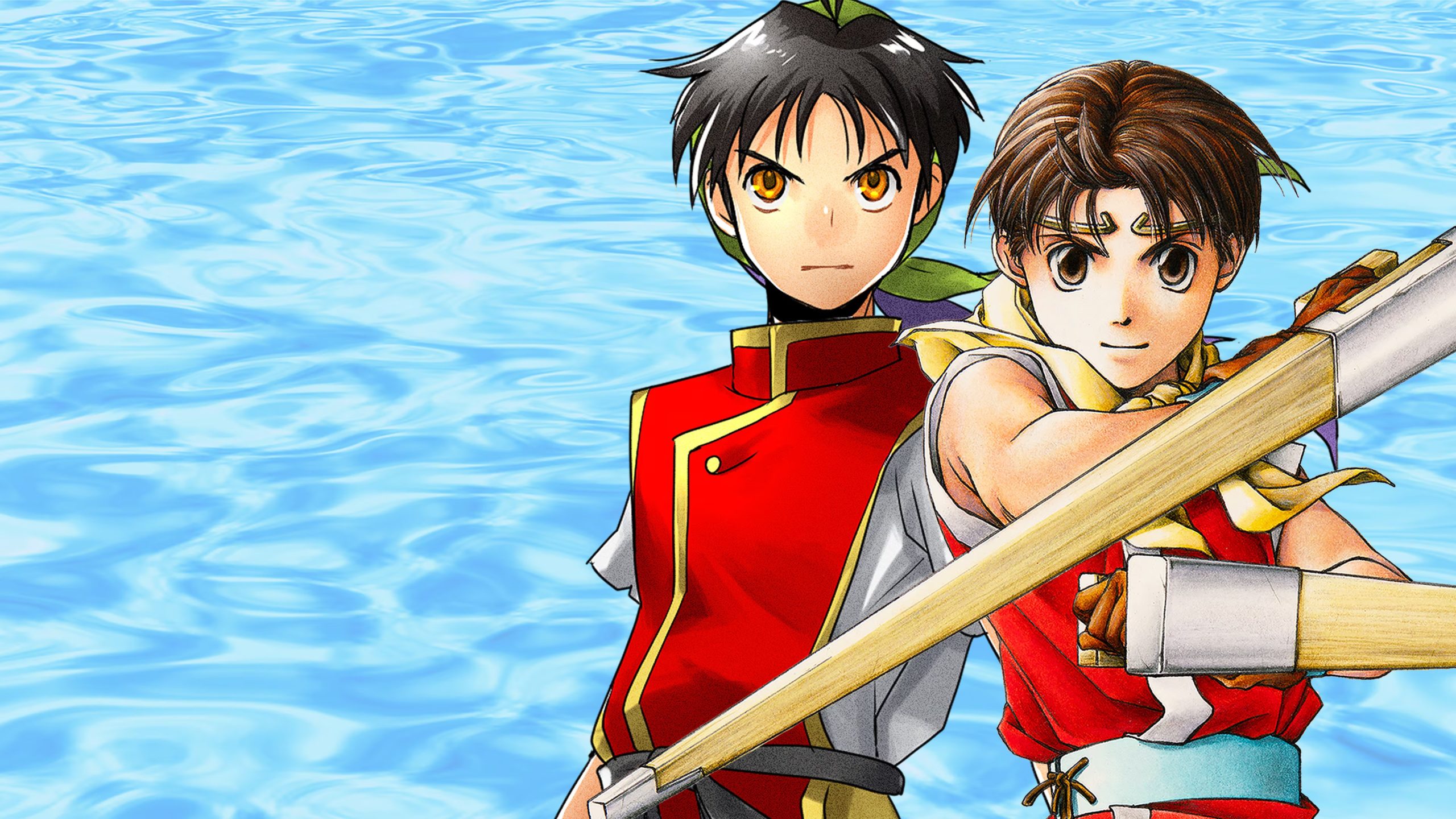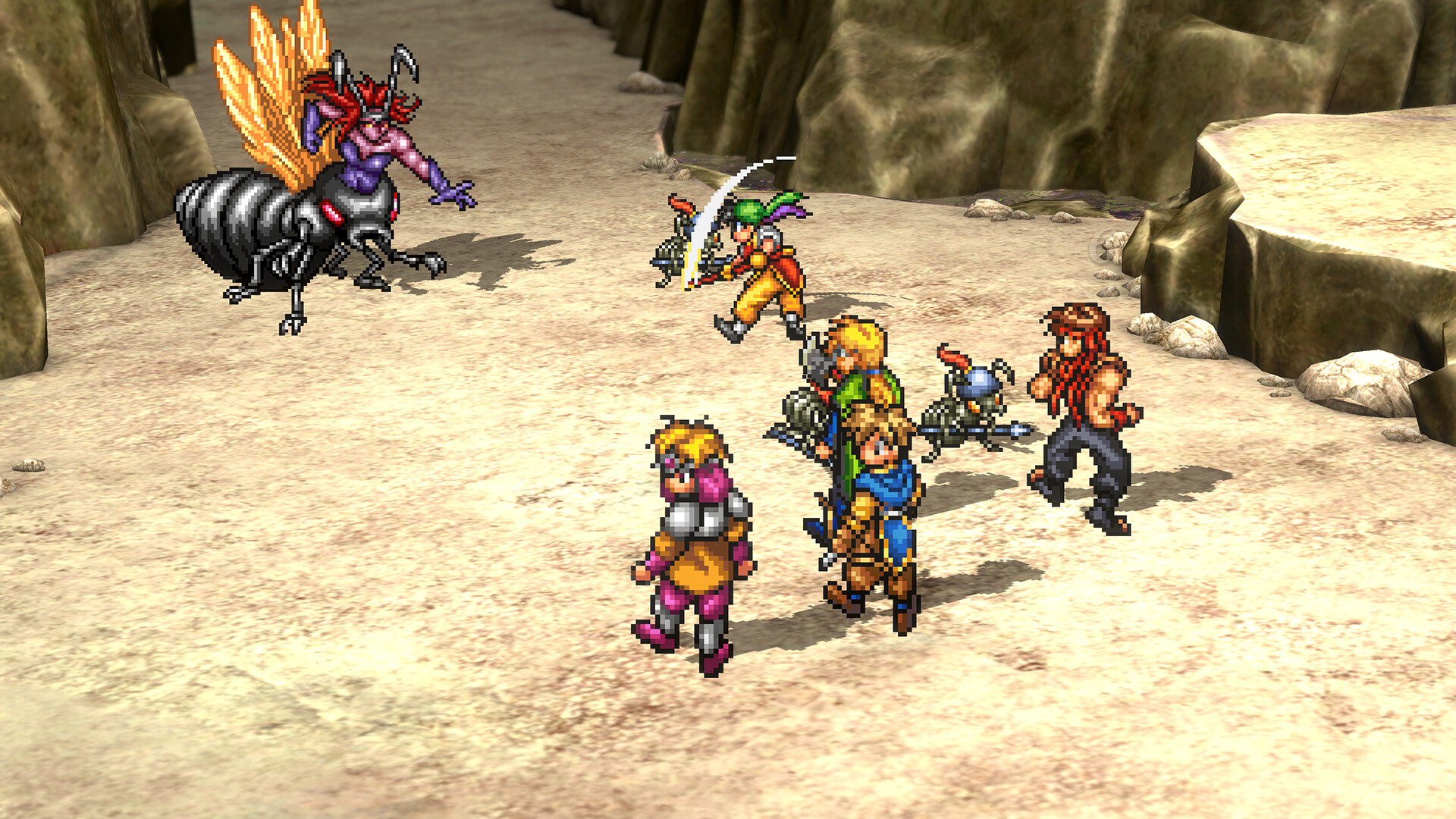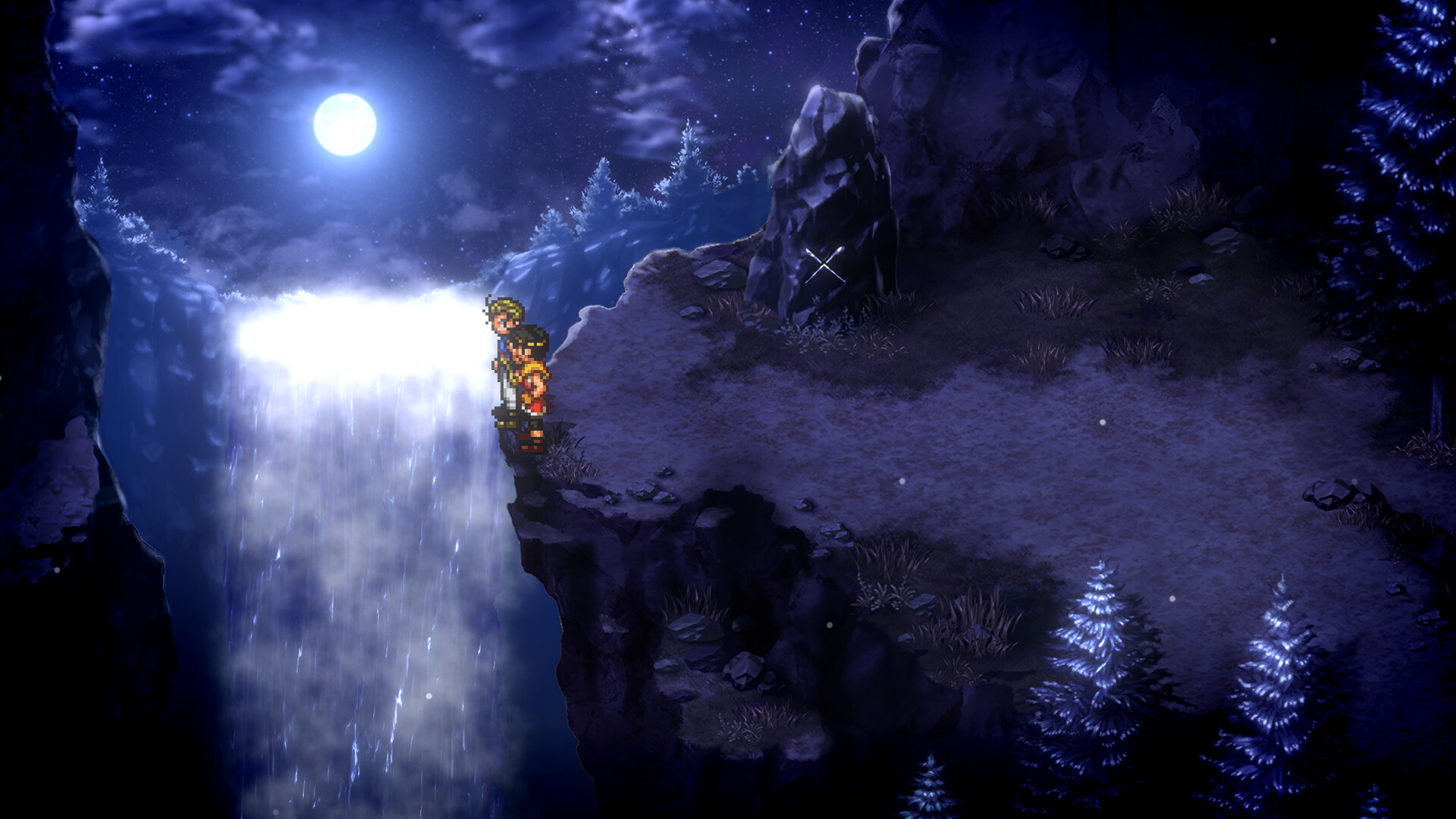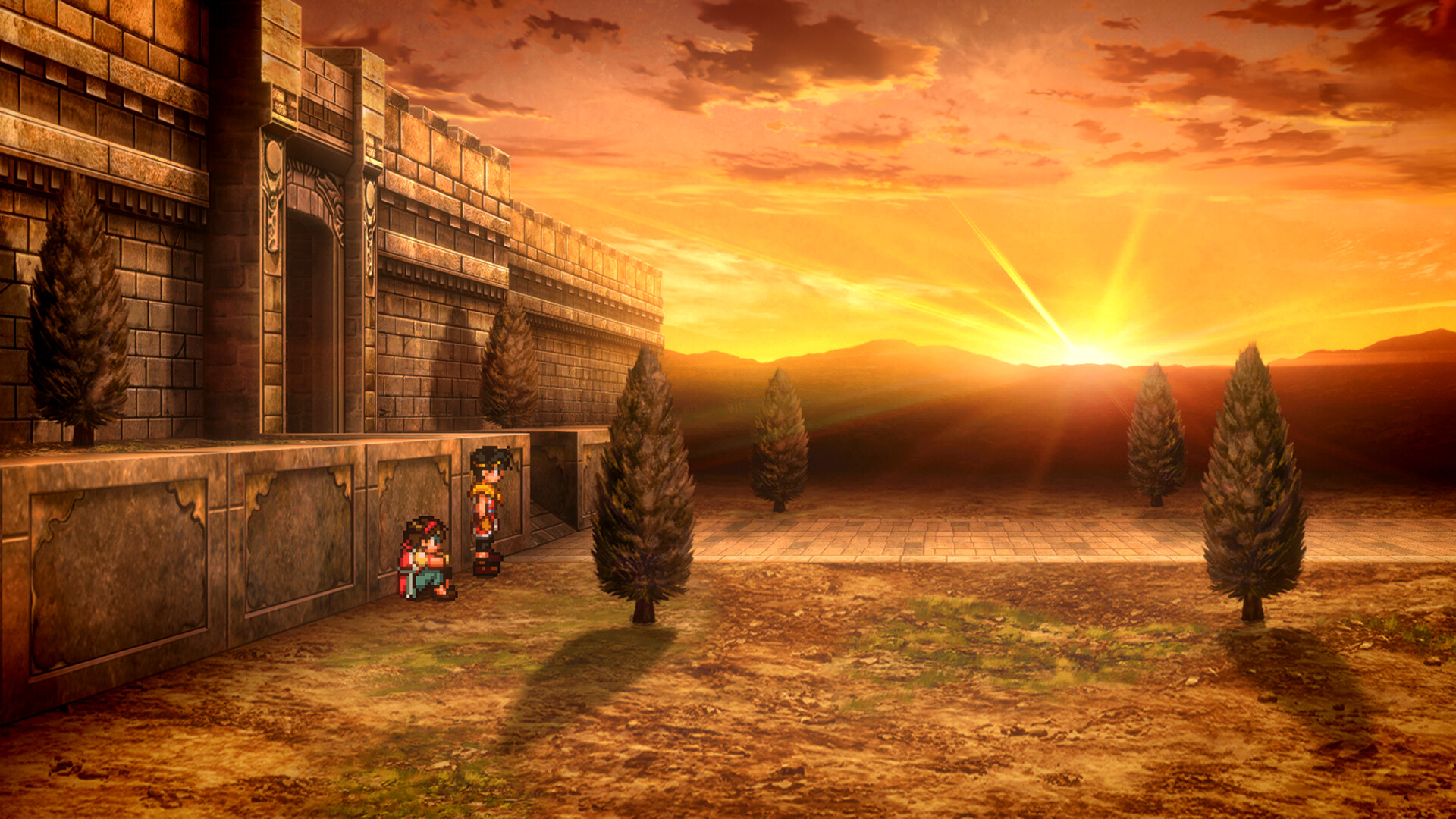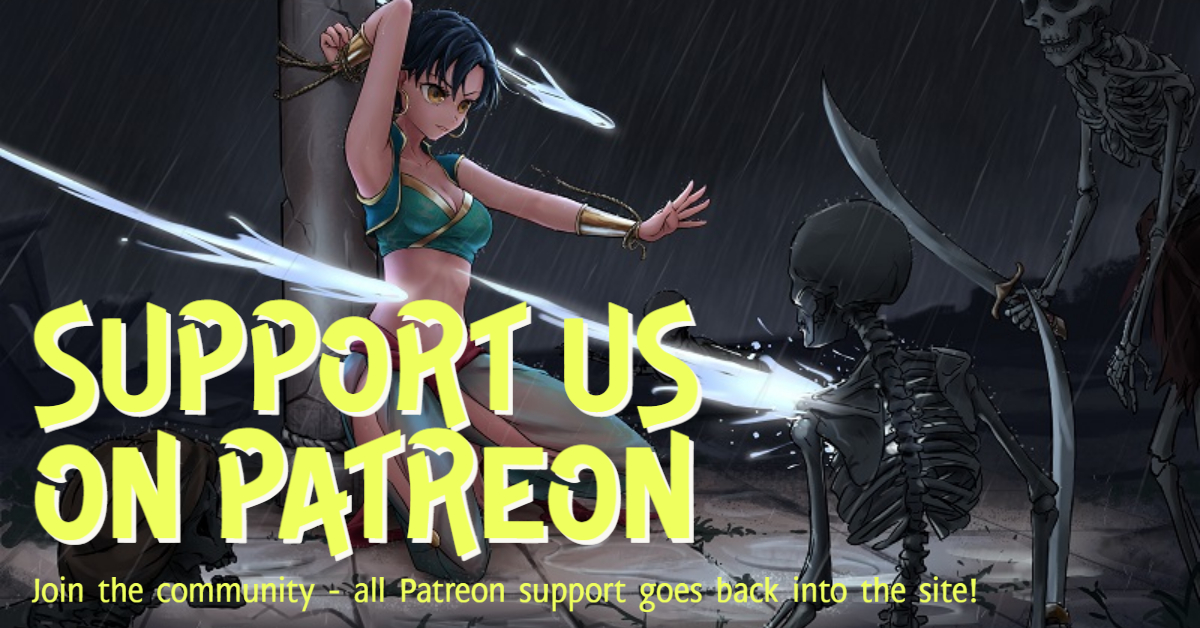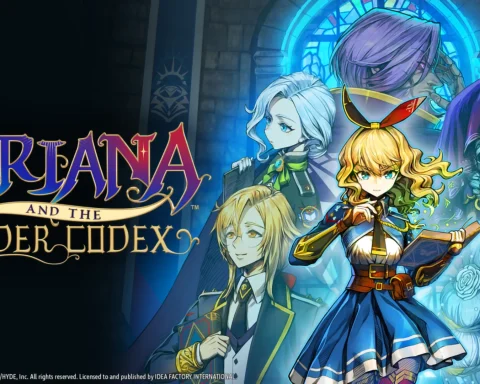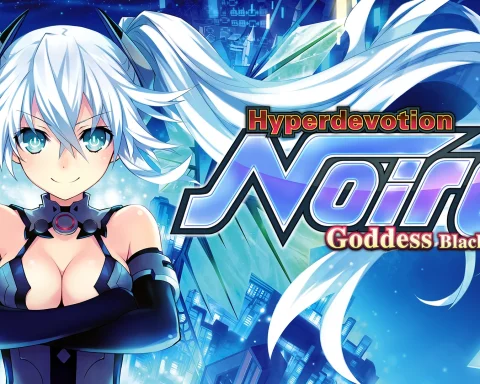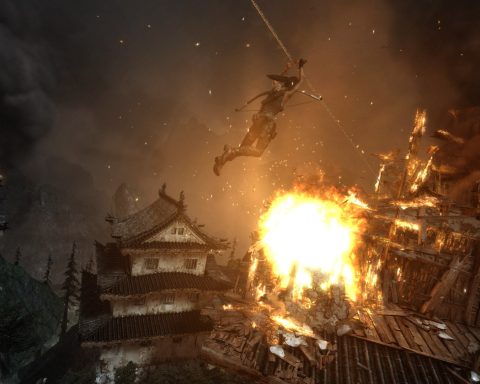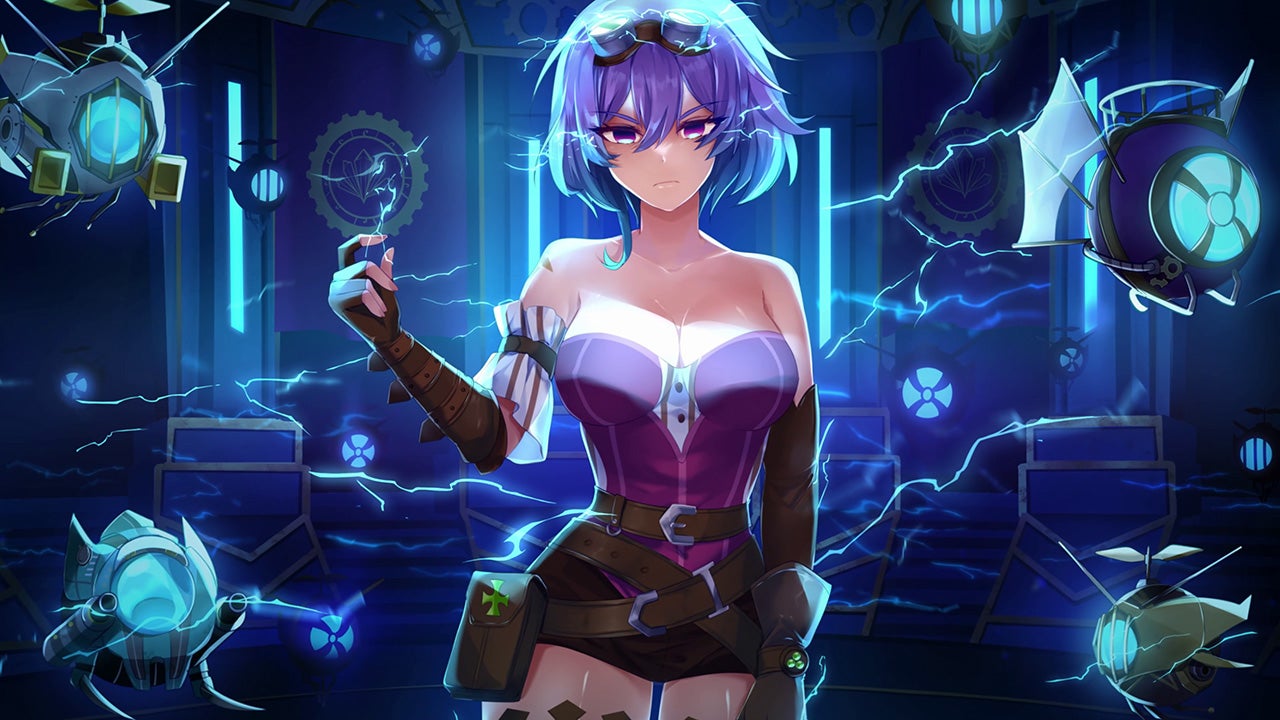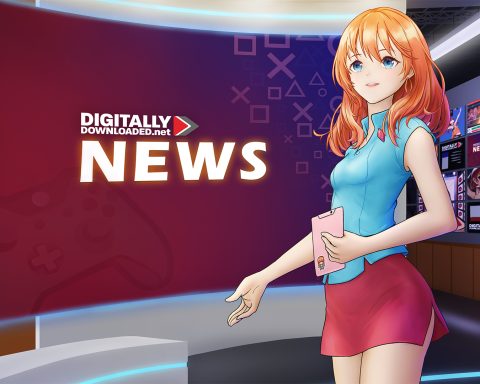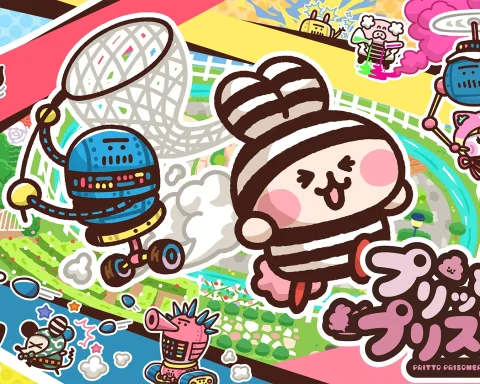Suikoden might not have quite the same profile as Final Fantasy or Dragon Quest, but this is a beloved cult JRPG franchise, stretching back to the original PlayStation. And I really do mean beloved. Many who have played it list Suikoden 2, in particular, list it as one of the finest games they have ever had the pleasure of. Sadly, the series has been allowed to fall into almost total obscurity, with the IP owner, Konami, being unwilling to do much with it (though you could argue for reasons that I’ll cover in this review, this series wouldn’t necessarily benefit from an endless cycle of sequels). Due to its scarcity and profile, the cost to play the original releases of Suikoden 1 and 2 tends to be massively inflated, which is in itself why it’s great that Konami has re-released them on just about everything. They’re accessible again.
We could quibble about the remasters being less-than-perfect, and those criticisms would often be fair. One of the big ones is that the backgrounds, which have been re-rendered to work in widescreen, don’t gel so well with the sprites, which are lower resolution. This is a similar problem to what we’ve seen with efforts to re-release Final Fantasy VII, VIII, and IX, and I was critical of the results there, so I see the criticism here. With that being said, I do think it’s less jarring here, as the sprites superimposed over higher quality backgrounds look more like a stylistic choice than the blocky 3D models in those PS1-era Final Fantasy titles.
Character portraits have also been re-drawn, and for character-driven games like Suikoden and its sequel, the hit-and-miss nature of these redraws may or may not put you off. The main point to make here is that Konami really should have just given us the option to flit between the original and the remaster (as they did with the Tomb Raider remasters) and let people simply enjoy their preference. Konami didn’t do that and now some fans are going to need to contend with a game that doesn’t quite deliver what they will consider to be an authentic Suikoden experience.
Meanwhile, there are a number of quality of life improvements that should be generally welcomed. There’s better inventory management, the ability to run around in eight directions (rather than four), and a speed up toggle to help with the experience grinding that inevitably comes with older-era JRPGs and turn-based combat systems. Most importantly, though, there’s a Log function, which is incredibly useful for figuring through some of the complexities with some of the quests, and what you need to do to get some of the characters from the expansive cast to join your party.
With all of that said and done, though, anyone talking about these remake elements is really missing the real quality of Suikoden, and that’s the narrative. That’s been largely untouched outside of some improvements to the less-than-ideal original translation, and that’s for the best, because the stories these games weave are near-on perfect.
Both Suikoden and its sequel are based on one of the most important novels in Chinese history: Water Margin. It is a massive epic, attributed to Shi Nai’an, that covers the stories of people from all walks of life – from peasant to higher class, warrior to rogue, fisherman, hunter, city officials and, just generally, people – who band together to oppose injustice and, particularly, corruption. The villains of Water Margin are local officials, the heroes the “bandits” that band together to defeat these threats are motivated by the communal good… and yet there’s also more to it than that. It’s easy to see why a whole range of perspectives within the Chinese political sphere have used this book in one way or another.
For example, as an article in The Conversation notes: “The plot’s political relevance has never gone away. Having been adopted in the 1930s by reformers as a healthily anti-feudal narrative, it was later deployed in a major 1975 government campaign, in which the leader of the Liangshan bandits in the book, Song Jiang, was criticised for accepting the emperor’s offer of amnesty. Had he not given the game away? And was he therefore not guilty of coexistence with forces inimical to the masses, just as party members, late in the Maoist era, would be guilty of capitulationism if their fervour flagged?
“This move, widely interpreted as an effort to head off the fall of the Gang of Four shows how centrally the characters have been retained even in modern and contemporary Chinese consciousness.”
Why does this book and material make such great material for a video game? Well, it’s obvious when you start playing Suikoden. The structure allows for players to have a humble start with a small band, that grows into a threat to corruption all around them. It’s also a structure that easily allows for those heroes to tackle local issues first before building up to much grander conflicts as they tackle larger and more powerful threats to the people. It’s the perfect formula for the RPG structure, in other words. In fact, over the years it has consistently surprised me that while we seventy thousand games based on Romance of the Three Kingdoms, and more than a few based on Journey to the West, Water Margin has only really inspired this one particular series (with the fourth great masterpiece of Chinese literature, Dream of the Red Chamber, being totally impossible material for a video game).
The only thing I can put it down to is that Water Margin demands a massive cast. I don’t blame developers from shying away from trying to grapple with that, and the one weakness and area where Suikoden struggles as a storytelling experience is also this challenge. Having 108 characters join your force sounds like an awesome idea… until you realise that that means many of the characters barely get a line of dialogue despite throwing their lives into your cause. Suikoden does depict the broad political theatre exceptionally, and several of the characters across both Suikoden 1 and 2 are iconic, both as heroes and villains. Once you encounter Luca Blight you’ll look at Kefka from Final Fantasy VI as a relatively benign and philosophically-minded individual, for example. Luca Blight’s terrorism is still eye-opening to actually witness to this day. However, outside of the handful of lynchpin characters, the rest of the cast don’t get anywhere near the same treatment, and while this is also true of Water Margin itself to an extent, it’s far more pronounced in Suikoden, and it’s a little jarring when we’re used to the entire party getting a fair shake in JRPGs today.
It’s also worth noting that while the premise of both Suikoden and its sequel are epic, in practice both games are relatively brief by modern standards. Each runs for around 30 hours, which is barely a chapter in some of the more modern epics (see: Legends of Heroes). The “short” run-time means that narrative segments are somewhat more truncated than more modern players might be expecting. Both (especially Suikoden 2) are well-written and deep enough to pass on their themes and get players thinking, but there will be a period of adjustment to go back to the faster pacing of JRPGs from the PS1 era if you haven’t played one for a while.
I don’t think we need the Suikoden series to “continue” any more than we need someone to go out and write a Water Margin 2. I have no idea if Konami is using this release to gauge interest in a proper “reboot” or new sequel, and being honest, I don’t think we need that. Frankly, I’m not even sure we need the rest of the series to be re-released from here (though I also wouldn’t say no to that). We should just appreciate that Suikoden and Suikoden 2 are remarkable achievements, both as literary adaptations and entertaining video games to play, and that quality and worth has not diluted one bit in the years since. Play these, love them, and then do yourself a favour and go and read Water Margin too.
